



Dave Young writes within the context of Localhost: RWX, a symposium and worksession at Edinburgh Sculpture Workshop from 29-31 October 2015. For more information about RWX, visit the Localhost website. RWX is funded by Creative Scotland, with support from New Media Scotland, Furtherfield, and Edinburgh Sculpture Workshop.
As smart devices shape the near future of personal computing, we – as users – are experiencing a shift in the way digital data is represented and accessed. For the last five years, Apple, Google and the other tech giants have desperately attempted to position themselves as market innovators and patent holders in the next generation of consumer tech. Over this period, we have seen more companies dropping desktop PC production in favour of novel gadgets such as smart phones, tablets, watches, fitness bands – and even contact lenses, glasses, and so on. A noticeable side-effect of this shift is that the ‘traditional’ filesystem interface, familiar to us as a visually traversable hierarchical structure of files and folders, is replaced by an app-centric interface. With its primary objective of being more user-friendly, this kind of interface limits as much as possible the tedious and touchscreen-hostile tasks of file management and directory navigation. It’s certainly worth reviewing how data should be represented in the modern Operating System – “tradition” is not enough reason to purposefully stick to an old system of files/folders, created by Xerox for their Alto/Star OS in the 1970s. That said, any radical change in the interface design of the filesystem needs to be critiqued, as it is acts as the mediator between us, our data, and our tools.
It’s worth emphasising that the aforementioned Xerox system is also a metaphor – it does not necessarily offer us a truer insight into the raw data on our devices than an app would. In the case of wanting to open a .txt file, whether we do this by selecting files via OSX’s Finder/Windows Explorer/one of the myriad File Managers in the world of Linux, or by opening an app on a “smart OS” such as iOS/Windows Phone/Android, we still achieve the same end goal: while the rudiments of the interface might change from one system to another, the .txt file is still utimately accessed and displayed to the screen. But between the traditional Xerox system and newer mobile interfaces, there is an interesting divergence. In the former instance, we navigate to the information, the precise location of the particular file /within/the/hierarchy/of/directories, then choose to open it with a tool of our selection. In the latter case, we select the tool, which then prescribes what information can be accessed with it. This simple inversion of intent does fundamentally alter our experience of the filesystem, but what’s at stake when we prioritise the choice of tool over the choice of file?
In the case of the former interface, we are provided with a visual map of our data. We can see where something is stored, how it relates to the other data we have saved, and also its related metadata. We are presented with an open scope, an indexical view of the files stored in our device’s memory. By default, we have the option of surveying data saved to our hard drive, and we can choose to ‘explore’ this should we so desire.
In the case of the typical smart OS interface, where the selection of a tool is prioritised over the selection of a given file, our vision of the filesystem is closed down by a “helpful” framework that only displays data that can be opened with a particular app. The messages app allows you to read your messages, the note-taking app allows you to speedily write notes, yet ne’er the twain shall meet – unless through a closed black-box framework, often labelled as ‘share’, which again guides you to an app that mediates your selection of file. As if peering through a keyhole, the user sees their filesystem in discreet parts and at particular moments, mediated by a given app’s functionality and filetype preferences.
It must also be said that, increasingly, much in-app data is often not even locally hosted on the device. It occupys no discernible, indexed space on its hard disk – at least no space that is visible and open to the user. Instead, it sits in a dynamic, transient “app cache”, where information is stored temporarily, to be frequently written, updated, and wiped without the user’s explicit knowledge or conscious intervention.
But this problem has a simple solution: why not just download a file manager from an app store?! It is of course an easy task to download a third-party file manager, but why was the filesystem manager done away with in the first place? Default configurations are rarely inert gestures. The omission of a stock file manager should be understood as a deliberate design decision intended to influence or shape the way we engage with the device. Is its omission, for instance, a desire to shake up what is seen as an antiquated interface? Is it a victim of contemporary design obsession about UI friction and clutter?
Searching for a file in a directory tree and not being able to find it can be seen as an example of friction. It is a moment where the ‘user’ becomes aware that they are ‘using’, activated by frustration or self-reflexive concentration and the necessity to make decisions, to search, to solve a problem. Finding the lost file is a terribly banale puzzle, but one that at least self-conciously engages the user. The app interface, which always tries to guess what you want to do next under its chief design objective of smooth simplicity, aims to remove friction. The smart OS is not free from friction though: when it guesses wrong, a manual solution can be more complex to rectify than the traditional filesystem interface, and perhaps at this point, the user realises they may not be as free to ‘use’ their technology as they expect.
Recently, we can see how some features of the smart OS are invading the desktop Windows, Mac and (to a lesser extent) Linux Operating Systems. Ubuntu, the most popular desktop Linux OS, raised controversy when its new Unity interface was unveiled in 2012, with a noticeably touch-friendly design aesthetic featuring large app tiles and fancy but pointless UI features. Was this part of the wider trend as demonstrated by Apple and Windows, where an ecosystem of multiple devices share smart and responsive interfaces, homogenous no matter the screen size, format, or method of interaction? Since then, Canonical (the parent company that develops Ubuntu) have attempted to venture into the smartphone market, working on both software and hardware, with an OS that neatly ties into the Ubuntu desktop experience. This approach to smart OS design is not simply a matter of convenience for the user, but good business sense too, especially as it becomes increasingly common for a technically adept individual to have a computer at home, a tablet in their bag, a phone in their pocket and a smartwatch on their wrist. Interface and brand go hand in hand: a suite of devices that play nicely together, share files conveniently over fancy wireless protocols, and look good when sitting side-by-side on a coffee table further encourages brand loyalty.
Despite its somewhat unforgiving text-based interface, it is the Terminal that perhaps offers the least mediation of all filesystem interfaces. Commands are taken as commands, presumed to be intentional and subsequently applied, whatever the consequences. When developed according to the UNIX philosophy of “do one thing and do it well”, command-line tools have the ability to “pipe” a standard output to an input of another tool – that is, each tool can share its output with the input of the next tool. Tools and files are thus recombinant, and in their purest form, are not hidden from one another. A basic example, featuring an ASCII cow:
ls -a #lists all files in the current directory.
. .. My_Computer.gif .shhh_super-secret.file
ls -a | cowsay #the standard output of 'ls -a' is piped into the standard input of cowsay. Hence, an ASCII cow lists out files for us.
_____
< . .. My_Computer.gif .shhh_super-secret.file>
-----
\ ^__^
\ (oo)\_______
(__)\ )\/\
||----w |
|| ||
Or for example, the ‘cat’ command dumps the contents of any file into the terminal. It does not really matter what you try to ‘cat’ – it could be an image, or whatever is in the RAM of your computer – if you have Read permission it will duly carry out your command.
cat My_Computer.gif #prints file contents to standard output
GIF87a+#)#� ######�##�#�##�����#�#���#�����������������������,####+#)###�0�I��8�ͻ�`(��X�h���T#p,�GR#m#�8��@#��[#�7b�#h:�Ndϴ##���U�d##P+��~u#�v9,{ ��`.#��o#Zbg'�bM{ }#mxjp#��"?�ak�xG+~S�K#��;KAA<'&��#'L"a����#����#���#?��0(���������##4�MŹ#�##��3�#����#�I�8�68��#z�����<���7���)��-l��ڼ�#� ����C##*�###;
sudo cat /dev/mem #prints the contents of a device's Random Access Memory to standard output
Yet, despite its direct and explicit interpretation of user input , we must return to the fact that the command line is a simulation – or more appropriately, an emulation – of a interface that mediates our relationship with the digital information stored on disk. Its commands recursively refer to lower-level frameworks and architectures, until it reaches the level of bits and electrical pulses.
Ultimately, when we discuss these issues about interface and access to information , we come to much greater issues surrounding the essence of memory and access to knowledge itself. As with any indexical system of information management (whether we speak of the archive, the library, the museum, or indeed the filesystem), there are inherent biases in the structures of representation that mediate and inform how we relate to the information contained within. There is a strong history of theorists (Jacques Derrida’s writing in Archive Fever being the obvious one) who attack the politics of the archive and our habits of designing biased frameworks for the storage of memory – certainly useful in these times, when we shift from one interface whose biases are familiar to another whose biases still somewhat elusive and in flux .
In the present though, it has become increasingly clear that the interface bias of the smart OS prioritises data-access and content-delivery, focusing on consumption rather than production. Maybe a filesystem manager is surplus to requirement for many, yet the ommission of such a perspective on our filesystem creates some issues for us as users. The phenomenon of ‘black-boxing’ – whereby complex activity is cloaked and opaque, incomprehensible and impenetrable to the user – becomes normalised. As a consequence, we can’t easily understand the behaviour of an app and the data it produces/accesses, we can’t explore what logs exist on our devices, and what personal data is potentially exposed to typical threats such as viruses, malware, hacks, and thieves. The perspective we have is simplified, and in this case, to simplify is to remove options, alternatives, and user-agency. The use-possibilities of our devices are parametrised, governed, and constrained by the overarching system of app-centricity, while opportunities for subversive intervention and creative misuse are reduced as we are obliged to act and respond within the increasingly powerful context of app store regimes.
Those orphaned config files, scripts, metadata, caches, loggers and logs: they will continue to reside in our most obscure, exotic directories, unseen, but saved.
—-
Also Read
* Turing Complete User – Olia Lialina
* Preface to FLOSS+Art – Aymeric Mansoux and Marloes de Valk
* McKenzie Wark – A Hacker Manifesto
* The Interface Effect – Alexander Galloway
DOWNLOAD
Full exhibition programme
‘Interface Perception. The Cybernetic Mentality and Its Critics: Ubermorgen.com’ by Søren Bro Pold
SEE IMAGES FROM THE PRIVATE VIEW
Beyond the Interface is an exhibition and series of events presented by Furtherfield, where leading international contemporary artists explore the technical devices that pervade our lives.
“The interface is the sense organ of the computer, whereby it becomes part of human culture” – Søren Bro Pold1
How much of our life do we spend in front of screens? Typically young adults in the UK spend more than a third of their waking lives watching TV or using computers, smartphones and tablets.2 These glowing rectangles are just one interface through which we contribute to the growing global human-machine network.
Nowadays a multitude of sensors proliferate in these same devices along with the chips and transmitters that are embedded in all consumer goods. Our actions are tracked, our utterances and exchanges are monitored, and our behaviours inform the design of future media, systems and products. This is the cybernetic loop.
The interface is the boundary across which information is exchanged, causing a transformation in one or both sides of that boundary. Between individuals, corporations and states; beliefs and disciplines; components of computer systems; or machines and living beings. Interfaces have always been a site of control, hidden in plain view: symbolic, social or technological. Seduced and habituated, we forget to question how we are dominated and reprogrammed by the very facilities that are supposed to free us as part of the digital revolution. Lori Emerson suggests this is an “overwhelming push to disempower users/consumers with closed devices”.3
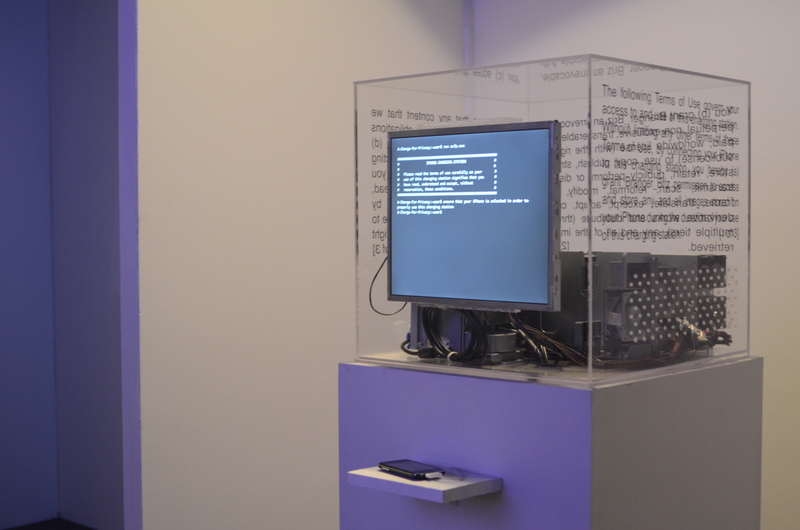
As you approach Furtherfield Gallery in the middle of London’s Finsbury Park, you will notice that the external walls have been transformed into an immersive installation of lush, rippling images of water lilies, leaves and other organic forms. Giverny Remediated is an installation of performative prints by Nathaniel Stern (US) continuing his ‘Compressionism’ series of work. Part of Stern’s Compressionist series, this work references Monet’s immersive painting installation Water Lilies, painted a century ago, only in this case the artist has strapped a hacked scanner to his body in order to create the works.

“Compressionism follows the trajectory of Impressionist painting, through Surrealism to Postmodernism, but rather than citing crises of representation, reality or simulation, my focus is on performing all three in relation to each other.”4
In a new commission Stern will create ‘Rippling Images of Finsbury Park’, a new public artwork created in the boating lake (which sits adjacent to Furtherfield Gallery). The artworks will be available to download by public USB installed in the Gallery walls as part of Dead Drop, the offline, anonymous, file sharing, peer to peer, network.5

Visitors can also download the essay that sets out many of the concepts behind this exhibition. ‘Interface Perception – The Cybernetic Mentality and Its Critics: ubermorgen.com’ by Søren Bro Pold (editor of Interface Criticism, Aesthetics Beyond Buttons) explores how we perceive interfaces and the role that art has to play in making technology more feelable.
Beyond The Interface – London is a remix of an exhibition co-curated by Furtherfield with Julian Stadon for ISMAR 2014, the International Symposium on Mixed and Augmented Reality, that took place in Munich in September 2014.
Happening alongside this exhibition
Scan the park
Dates June-July to be confirmed, Furtherfield Gallery
Workshops for all ages to hack your own scanner. Create your own rippling images of Finsbury Park based on the Nathaniel Stern commission. Also chance to show your work in Furtherfield Gallery. Please contact info@furtherfield.org to join the waiting list.
Telluro-geo-psycho-modulator workshop and field trip with Jonathan Kemp
2-3 May, Furtherfield Commons
How are our brain states modulated by the interference patterns created by our immersion in natural weak geomagnetic fields?
Living Assemblies – Design Your Silken Self
6 – 7 June, Furtherfield Commons
In partnership with The Arts Catalyst. A hands-on workshop with Veronica Ranner, investigating the coupling of the biological material silk, with digital technologies
WWW TV installation, Web We Want Festival
28-31 May, Southbank Centre, London
Featuring Grey Matter by Jennifer Chan and Facial Weaponization Communiqué: Fag Face by Zach Blas against a bank of monitors displaying videos found on the Web of contextual media, systems and products.
Back to the Future
Sunday 31 May 17:00 – 18:00, Queen Elizabeth Hall Front Room
To close the Web We Want festival, Jude Kelly CBE, Artistic Director of Southbank Centre is joined by Renata Avila (Web Foundation), Sarah T Gold (Alternet, WikiHouse Foundation) Ruth Catlow (Furtherfield) to recap the festival and look towards the next 25 years of the Web – what’s in store for the future and how can we make an impact on the shape of the Web?
Symposium: Designing Digital Creative Commons for the Performing Arts
27 June
Digital tools for communication, artistic collaboration, sharing and co-creation between artists, and creative audiences. Booking info to follow soon.
Museum of Contemporary Commodities
Running parallel to the exhibition is an artistic research project by Paula Crutchlow and Dr Ian Cook, exploring trade justice issues by presenting the things we buy today, as the heritage of tomorrow.
Walkshop led by data activist Dr Alison Powell
7 May 6-8.30pm, Furtherfield Commons
To find out more about the local retail environment, local commodities, trade-justice and data processes in Finsbury Park. As part of the Museum of Contemporary Commodities.
Commodity Culture social event
Saturday 13 June 11am-3pm, Furtherfield Commons
Drop-in for cake and a cup of something, and a chat about trade and exchange in Finsbury Park. Open to everyone. As part of the Museum of Contemporary Commodities.
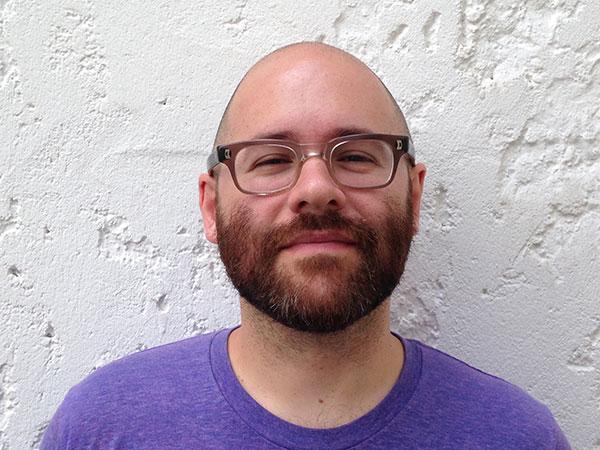
Zach Blas is an artist, writer, and curator whose work engages technology, queerness, and politics. Currently, he is an Assistant Professor in the Department of Art at the University at Buffalo. His work has been written about and featured in Art Review, Frieze, Art Papers, Hyperallergic, Rhizome, Mousse Magazine, The Atlantic, Al Jazeera America, The New Inquiry, Leonardo Electronic Almanac, and Wired. http://www.zachblas.info/
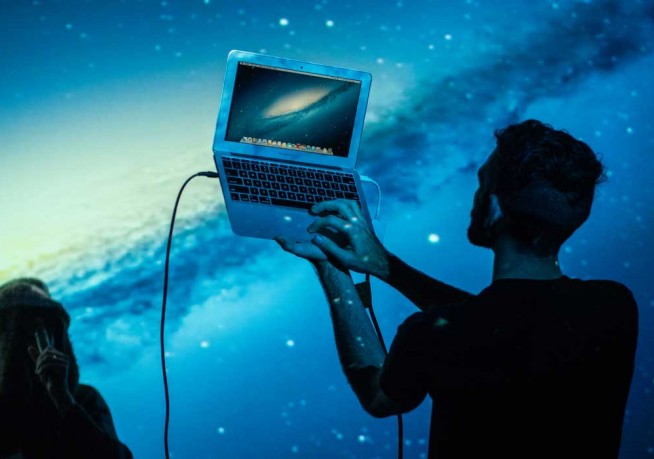
Branger_Briz are artists, educators && programmers bent on articulating our digital landscape creating memorable interactive projects for themselves && clients. To them contemporary culture means digital culture. They are driven by a desire to share our digital literacies, so their work tends to be public-facing && leverage new-media. They specialise in producing custom projects from concept >> design >> development >> launching/sharing && love every step in the process.
http://brangerbriz.com/
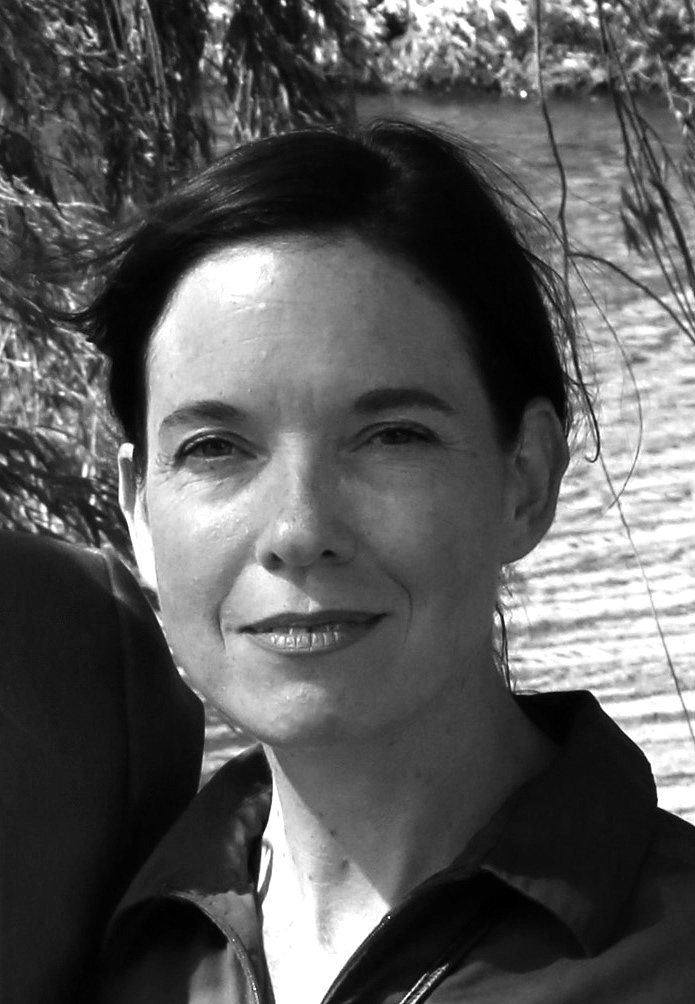
Mez Breeze is an Australian-based artist and practitioner of net.art, working primarily with code poetry, electronic literature, and digital multimedia works combining text, code, image and sound. Born Mary- Anne Breeze, she uses a number of avatar nicknames, including Mez and Netwurker. As of May 2014, Mez is the only digital writer who’s a non- USA citizen to have her comprehensive career archive (called “The Mez Breeze Papers”) housed at Duke University, through their David M. Rubenstein Rare Book & Manuscript Library.
http://mezbreezedesign.com/
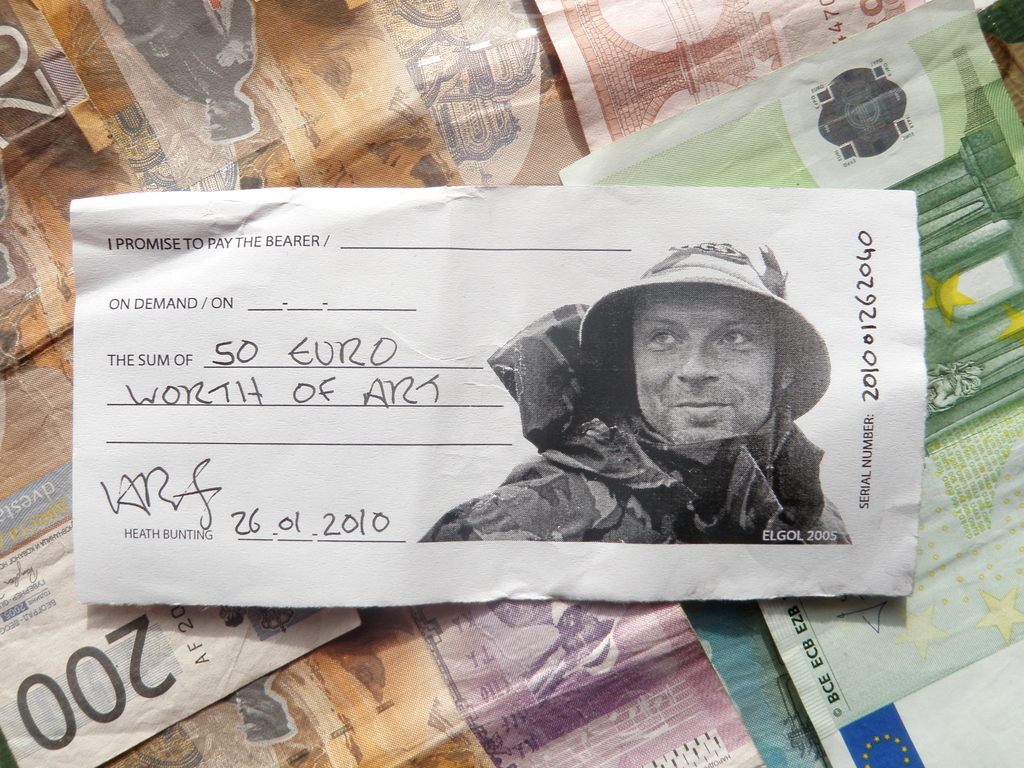
Heath Bunting was born a Buddhist in Wood Green, London, UK and is able to make himself laugh. (currently, reduced to only smile) He is a co-founder of both net.art and sport-art movements and is banned for life from entering the USA for his anti genetic work. His self taught and authentically independent work is direct and uncomplicated and has never been awarded a prize. He is both Britain’s most important practising artist and the World’s most famous computer artist.
http://www.irational.org/heath/
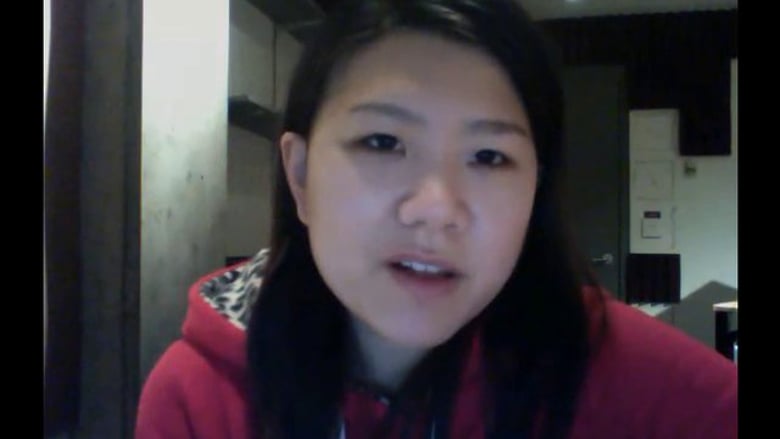
Jennifer Chan makes remix videos, gifs and websites that contend with gendered affects of media culture. Chan had solo presentations at the Marshall McLuhan Salon in the Embassy of Canada in Berlin for Transmediale 2013 (Germany), Future Gallery (Berlin), Images Festival (Toronto), Vox Populi (Philadelphia) and recently LTD (Los Angeles). She has a HBA in Communications, Culture, Information Technology from University of Toronto and a MFA in Art Video from Syracuse University. Chan was born in Ottawa, raised in Hong Kong, and is now based in Chicago. She co-organizes Dorkbot Chicago and helps women learn code at Girl Develop It. http://jennifer-chan.com/
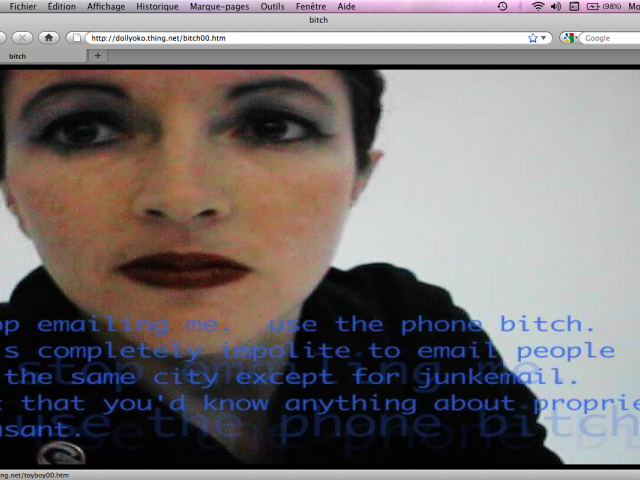
Francesca da Rimini explores the poetic and political possibilities of collaborative (tel)embodied play. Early net projects include GashGirl, FleshMeat and the award-winning labyrinth dollspace. As cyberfeminist VNS Matrix member she inserted slimy interfaces into Big Daddy Mainframe’s databanks, perturbing the (gendered) techno status quo. Her doctoral thesis at the University of Technology Sydney investigated three diverse cultural activism projects seeding the formation of new collective subjects. She has co-authored Disorder and the Disinformation Society: The Social Dynamics of Information, Networks and Software (Routledge 2015). http://gashgirl.sysx.org
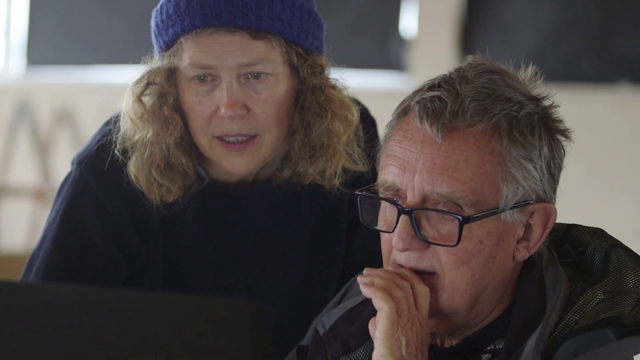
Genetic Moo (Nicola Schauerman and Tim Pickup) have been creating individual interactive art works for over 5 years. They create Microworlds, digital ecosystems and living installations that are always changing, mutating, and evolving in front of your eyes. Both gained Masters degrees from the Lansdown Centre for Electronic Arts. They have exhibited extensively in galleries, festivals and museums.
http://www.geneticmoo.com
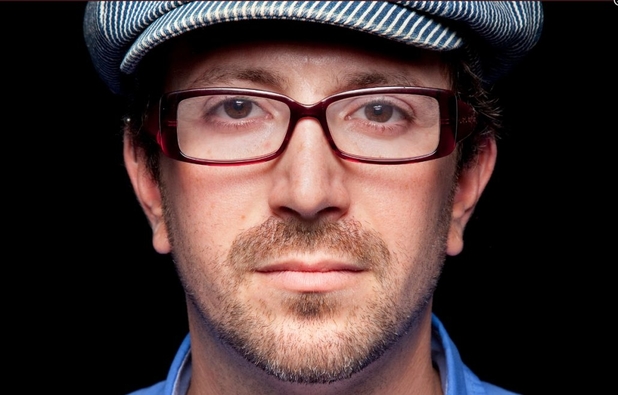
Nathaniel Stern is an artist and writer, Fulbright grantee and professor, interventionist and public citizen. He has produced and collaborated on projects ranging from ecological, participatory and online interventions, interactive, immersive and mixed reality environments, to prints, sculptures, videos, performances and hybrid forms.
His book, Interactive Art and Embodiment: The Implicit Body as Performance, takes a close look at the stakes for interactive and digital art, and his ongoing work in industry has helped launch dozens of new businesses, products and ideas.
http://nathanielstern.com
Beyond the Interface – Artists Panel
Web We Want Festival – Southbank Centre
28-31 May 2015
Chair – Ruth Catlow
Speakers (TBC)
EXHIBITION LOCATION
Furtherfield Gallery
McKenzie Pavilion, Finsbury Park
London N4 2NQ
T: +44 (0)20 8802 2827
E: info@furtherfield.org
Visiting information
PANEL LOCATION
Southbank Centre
Belvedere Road, London SE1 8XX
Directions
FOR MORE INFORMATION
Contact Ruth Catlow, Furtherfield
See images of the event on Flickr
Olga P Massanet and Thomas Aston have built a custom made VLF antenna to monitor ionospheric disturbances caused by solar storms. For this exhibition they invite makers and thinkers to participate in a creative sprint and come up with ideas on how to make these disturbances felt. Whether it’s a device, a visualisation, a sonification, or a poem, participants will design interfaces to tune into some of the most powerful forces that permeate our world.
In a matter of 5 hours participants will experience what the artists have been through in the past 5 months. In teams, they’ll get to build an antenna, tune it, collect the data and conceive or experiment with actual or possible interfaces to make solar storms ever more tangible!
Olga P Massanet
Olga is a media artist and researcher working as co-editor on the Furtherfield website and developing and delivering workshops for the Zero Dollar Laptop project and Furtherfield’s Outreach programme. Olga is currently pursuing a practice-based PhD at Goldsmiths. Her research project looks into assemblages of sunlight, human bodies and machines. She is particularly interested on subtle modes of communication across bodies of radically different nature. She looks at the ways in which electronic circuits, computational systems, endocrine processes and neurological happenings intermingle. The tools she develops are speculations about the undercurrents of body communication.
Thomas Cade Aston
Thomas is an emerging sound artist and electronic musician based out of London, UK and Toronto, Canada. His composition, production and performance work explores the dark and meditative fringes between technical, cerebral and somatic experience. Recent work includes ambient electronic compositions for Space Video (Turbulence/Revised Projects– Vancouver), an interactive soundscape for A Place to Reflect (Nuit Blanche-Toronto) and a highly anticipated electronic A/V performance at NewFormsFestival 11 (Vancouver). Thomas is busy at play in the spectrum, pursuing an MA in Interactive Media at Goldsmiths College, UK and readying for the launch of his debut LP Greenwich Mean Time with Hybridity Music this summer.
+ Technologies of Attunement is part of Invisible Forces at Furtherfield Gallery.
+ More Invisible Forces events.
Sign up: ale[at]furtherfield.org
To accompany Invisible Forces, Furtherfield invites all gallery visitors to take part in a programme of public play, games, making and discussion led by alert and energetic artists, techies, makers and thinkers: Class Wargames, The Hexists, Dave Miller, Olga P Massanet and Thomas Aston.
Saturday 23 June 2012 – 1-5pm
Summer Board Games and Picnic with Class Wargames and Kimathi Donkor
Saturday 30 June 2012 – 1-5pm
Summer Board Games and Picnic with Class Wargames
Wednesday 04 July 2012 – 9-11am
3 Keys – The River Oracle – The Hexists
as part of Moving Forest by AKA The Castle
Wednesday 11 July 2012 – 11-5pm
Technologies of Attunement – Olga P Massanet and Thomas Cade Aston
Saturday 21 July 2012 – 2-5pm
Dave Miller’s Finsbury Park Radiation Walk